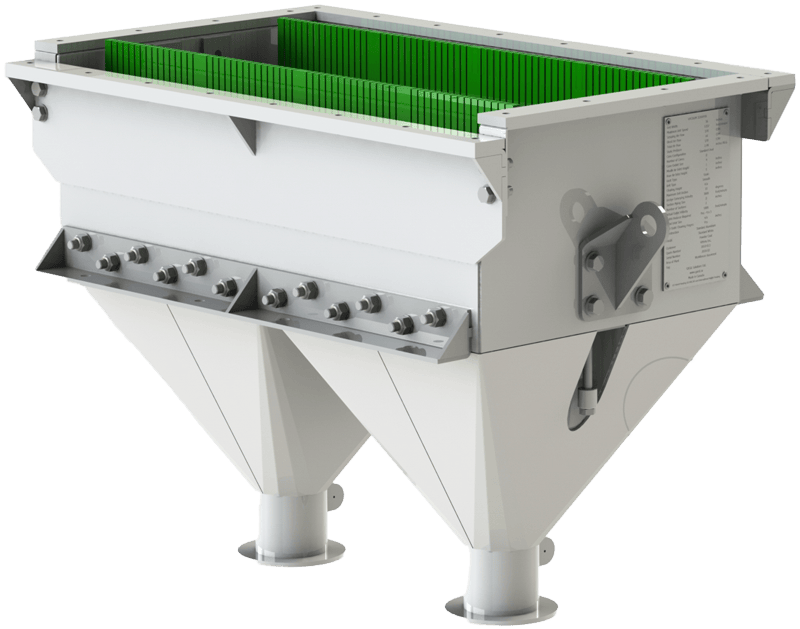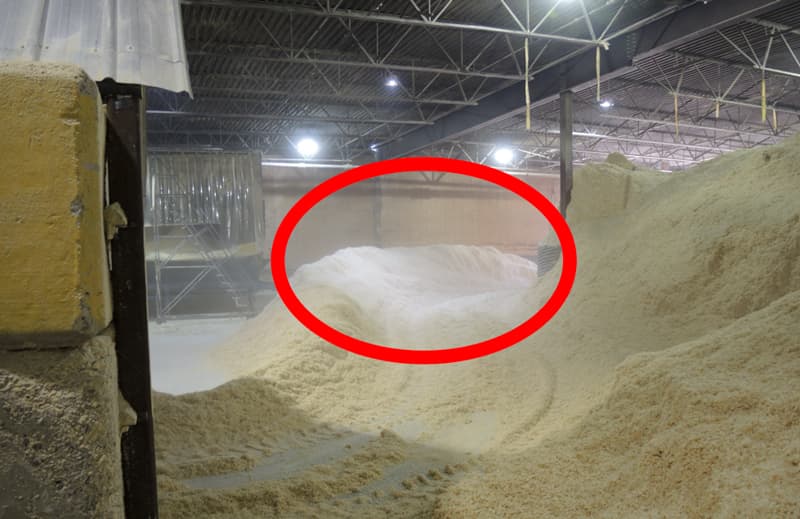

Belt Wipe™
conception
Our Story
The owner of the Belt Wipe, Mr. George Hutchison, was completing a combustible dust hazard assessment (DHA) at a wood pellet manufacturing plant in 2015 when he first identified the need for a high-efficiency conveyor belt anti-carryback dust control device.
The wood pellet plant that was evaluated had several existing dust control systems, and during the DHA Mr. Hutchison identified that each of the material transfer points and processes in the wood pellet plant had effective and properly-designed transfer points, passive containment, and aspiration connections to the dust control ductwork and filters.
However, there was a thick haze of combustible wood dust in the air within the plant’s production areas, so thick in fact that a dust mask had to be worn to ensure compliance with worker safety guidelines, and the large amounts of airborne dust were causing daily production shutdowns for combustible dust mitigation cleanups to maintain the entire facility below its NFPA-calculated explosion threshold.
Photo: Wood Dust Haze at Wood Pellet Plant
The source of all the airborne dusts was traced back to the facility’s many conveyor belts that were moving kiln-dried pine shavings and sawdust.
Upon identifying that the conveyor belts were the source of the airborne dusts, Mr. Hutchison searched the marketplace for effective off the shelf dust control devices for conveyor belts and found no products that would be effective at controlling conveyor belt carryback.
Conventional belt scrapers were already fitted at the wood pellet plant and did not control conveyor belt carryback, rotary brushes would wear quickly and require a large amount of dust collection aspiration air to contain the large clouds of dust that rotary brushes generate, air knives moved a large amount of air without cleaning the dust from the underside of conveyor belts, and wet conveyor belt cleaning solutions were simply not an option for wood dust that must be turned into dry wood pellets.
There was simply nothing in the marketplace that would meet the needs of industry, that could be fitted to both new and retrofit conveyor belt systems; and nothing that could be fitted to the wood pellet plant quickly to eliminate their daily shutdowns for dust mitigation.
On the spot, the genesis of a concept for creating a solution to one of the conveyor industry’s largest unsolved problems was created, and the Belt Wipe was created. Over the next three years Belt Wipe designs and prototypes were engineered, developed, tested, improved, and finally were industry-ready for deployment.
Unfortunately though, the lack of an off the shelf instant technology solution like the Belt Wipe to control fugitive dust carryback from the conveyor belts at the Wood Pellet plant and the repeated dust mitigation shutdowns caused a financial hardship that lead to the facility entering bankruptcy procedures within four months of the Dust Hazard Audit, the plant shut down, and receivers and creditors disposed of the company’s assets. Had the Belt Wipe technology been available at the time of the Dust Hazard Audit of the wood pellet plant, it is likely that the facility could have operated for week-long periods (or longer) without shutdown for combustible dust mitigation efforts, thereby avoiding costly production delays.
Photo: George Hutchison, owner of the Belt Wipe™
The Owner of the Belt Wipe, Mr. Hutchison is a Licensed Mechanical Systems Engineer (registration in British Columbia, Canada) specializing in dust control, fire protection, HVAC, District Energy and building services piping design; with 34 years of relevant experience evaluating and designing many different mechanical systems for institutional and industrial clients.
Mr. Hutchison invented the Belt Wipe specifically to address the issue of resolving conveyor belt carryback.
Fitment of a Belt Wipe to your facility will typically result in the removal of 92%~95% of the fugitive dust from the return belt surface, before it becomes airborne and before the fugitive dust is dispersed randomly below the conveyor belts. Refer to our Technology Comparison and Features & Benefits section for detailed performance information.
Use of the Belt Wipe will:
- Reduce the exposure of your workers to airborne contaminants
- Reduce your cleanup labour, allowing redeployment to critical preventive maintenance tasks
- Reduce cleanup frequency for combustible dust applications to avoid costly production shutdowns for dust mitigation, and lower the facility’s explosion/fire risk

